This post may contain affiliate links. Please see our disclosure for more information.
Homemade almond milk is completely unlike store-bought in that it comes straight from nature, with none of the additives, stabilizers, and preservatives that try to fool you into believing the milk is creamy, when it’s actually highly diluted.
Personally, I can’t stand the taste of store-bought almond milk, and it always upsets my stomach. So I could never get into it.
Homemade almond milk is something else entirely, and well worth the effort!
If you haven’t tried making almond milk from scratch, then I invite you come over where the grass is much, much greener …
How to make
It only takes about 20 minutes to make—including soaking, removing the skins, blending, and straining—infused in each step is an opportunity for mindfulness.
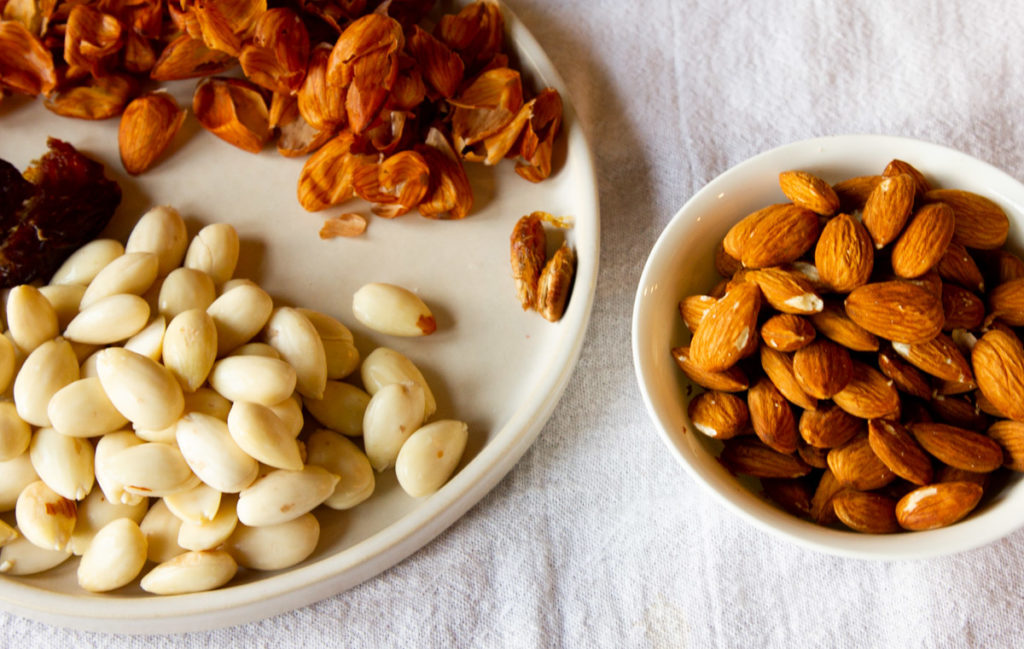
As someone who strives to eat mostly whole foods, I really enjoy soaking grains, legumes, nuts, and seeds. When I see my bowl of soaking almonds it makes me feel good.
The next day when it’s time to remove the skins, I take joy in slipping off the skins. It’s quite satisfying. And whenever there’s a repetitive process in the kitchen, it’s a reminder to let go and just focus on the task at hand. It only takes a couple minutes.
Next, I enjoy rinsing the peeled almonds and adding fresh clean water with spices into the blender.
Watching the blender work, and seeing the transformation of the hard, oily almonds, into creamy milk, looks almost miraculous to me.
Then, straining out the milk using a nut bag, and noticing the rich creaminess and froth in the milk reminds me of a job well done.
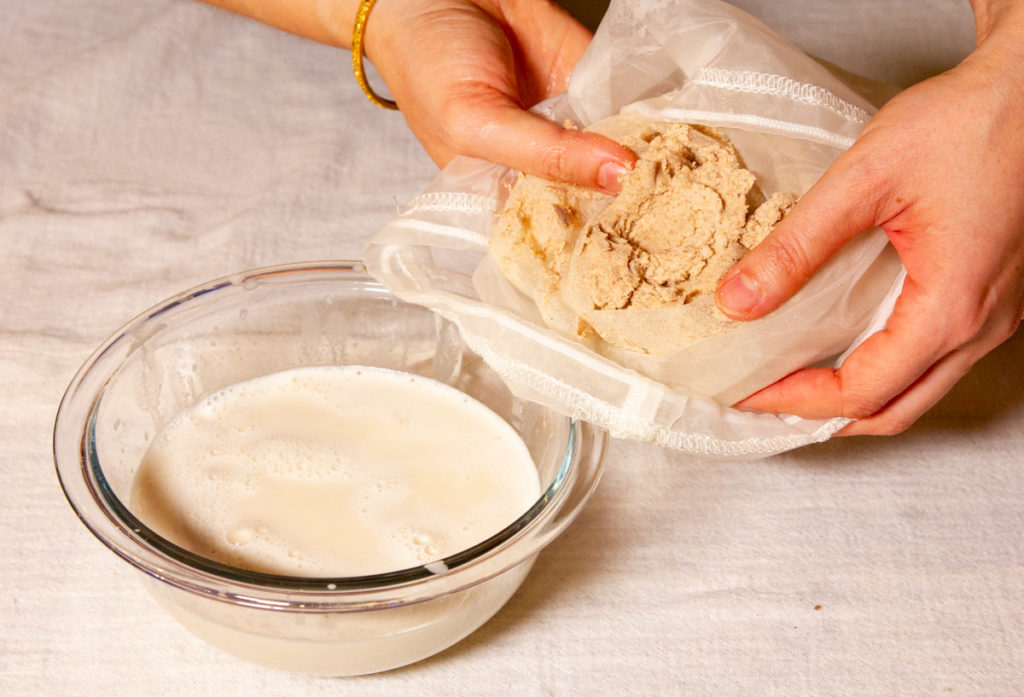
I place the fresh milk in the fridge to cool a little before enjoying my first small glass. I take it medicinally. So about half a cup is a serving.
The effect is immediate. You feel soothed, calmer, and more at peace. That’s Sattva, or the experience of taking in pure food.
Almond milk is tridoshic, but especially soothing for Pitta. It is easy to digest, cooling, naturally sweet, and a little heavy.
Health benefits
- A source of healthy fat
- 20 percent protein by weight
- Brain and nervous system tonic
- Increases energy, immunity, and strength
- Reduces inflammation
- Heart tonic
- Supports bones with calcium and magnesium
- Reduces LDL cholesterol
Do I have to peel the skins?
While almonds are easy to digest, the skins are not.
Almond skins are heating, which can disturb Pitta, and gas-forming for both Vata and Kapha.
If you are in a hurry, you can blend your milk with the skins on, but for better digestion and a cleaner milk, remove them.
How do I strain the almonds?
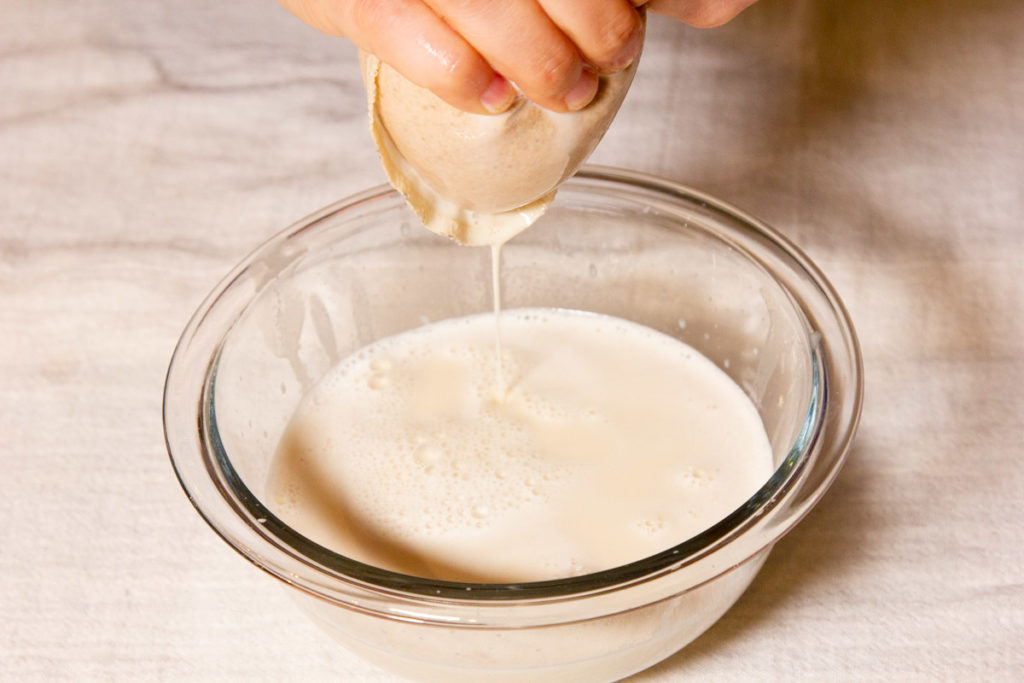
The easiest way to make almond milk (or any nut or seed milk) is to use a nut bag.
A nut bag is made from BPA-free fine nylon mesh, and it is super strong and reusable. This is what I use.
You can also strain using a fine mesh strainers. I love OXO products. They almost always surprise me with their quality.
If you buy cheesecloth, look for one that’s unbleached and nice and fine, like this one.
You can always double or triple up the cheesecloth as well.
Do I need to add spices?
According to Ayurveda, almond milk is a little heavy, so adding spices adds digestive support to make the almond milk a little lighter and easier to digest.
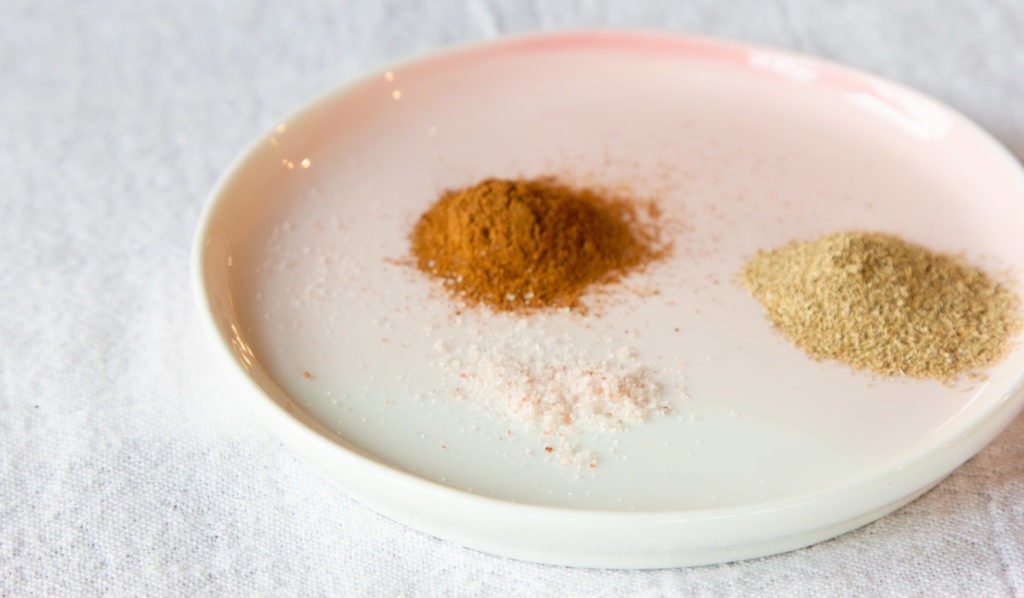
Cardamom in particular is light and aromatic. Its aromatic qualities help to move food down through the digestive tract. It is also antispasmodic, and so it helps relax your muscles and relieve headaches.
Cinnamon is relatively warming, which balances out the cooling quality of the almond milk. Cinnamon’s warmth stimulates circulation and helps to regulate blood sugar and fats.
So cinnamon is supporting the digestion of healthy fats in this beautiful drink.
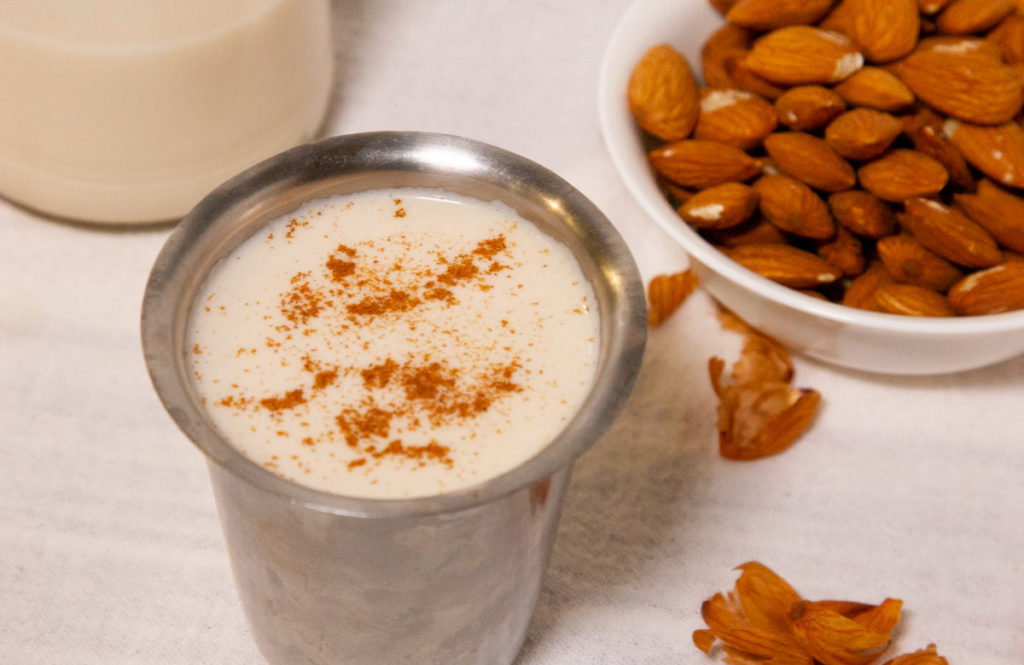
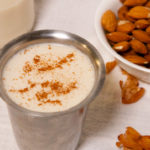
Recipe for Homemade Almond Milk
Ingredients
- 1/2 cup almonds soaked
- 1 1/2 cups water
- 2 medjool dates seeds removed
- 1/4 teaspoon cardamom powder
- 1/8 teaspoon cinnamon powder
- pinch Himalayan pink salt
Instructions
- Place almonds in a bowl or jar and cover with cold water. Leave on the counter for a minimum of 2 hours, but up to 12 hours. (If you don’t have time to blend the almond after 12 hours, replace the water and keep in the fridge for up to 2 days.)
- Dump the soaking water and rinse soaked almond. Remove the skins by squeezing one at a time with your index finger and thumb. The skins will just pop off. It is kind of fun actually.
- Rinse the peeled almond again, and then add to your blender along with water, dates (remove seeds), cardamom powder, cinnamon powder, and a pinch of salt.
- Blend on high for 1 minute or more, depending on how high-powered your blender is. A high speed blender on high speed will only take a minute. The almonds should be ground up very fine.
- The next step is to strain the almonds through a nut bag, fine mesh strainer, or fine cheesecloth. Squeeze and squish until all the liquid is extracted. The almond meal that’s left can be discarded, or used for other recipes (see notes).
